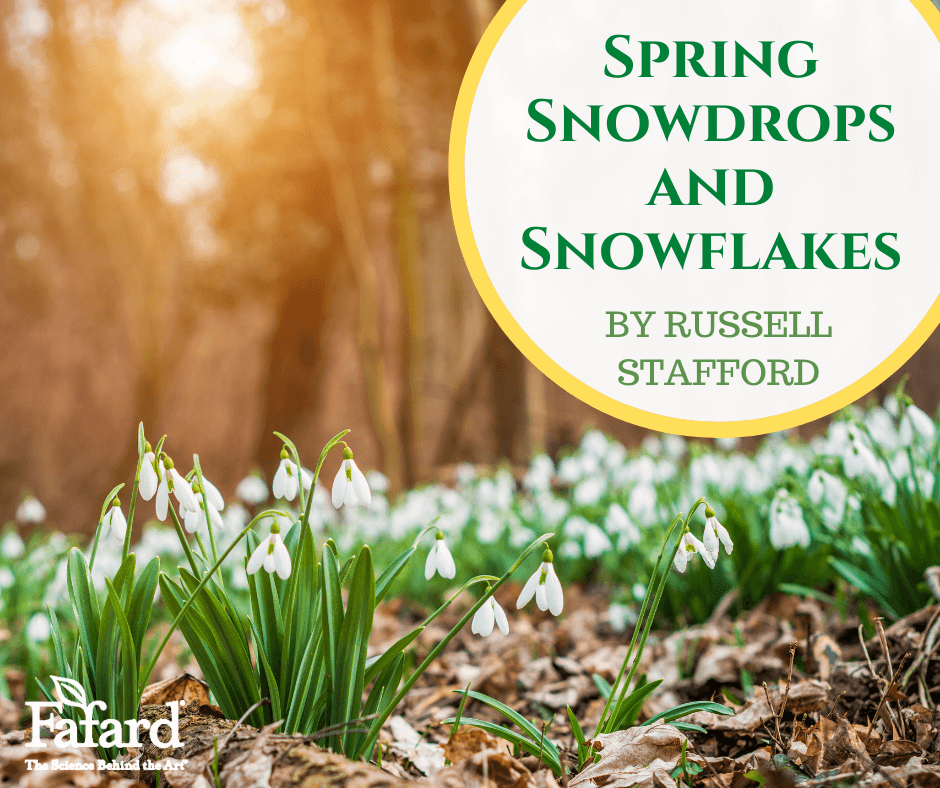
Ah, the first snowdrop of spring. Or is it a spring snowflake? Both are early-blooming bulbs that bear nodding, white, 6-parted flowers above clumps of strap-shaped leaves in late winter, while most of the garden is still slumbering. Both also favor similar garden habitats – namely, partial shade to sun and well-drained, humus-rich soil. It’s no surprise, then, that they’re often mistaken for one another – and that they’re also closely related.
Snowdrops versus Spring Snowflakes
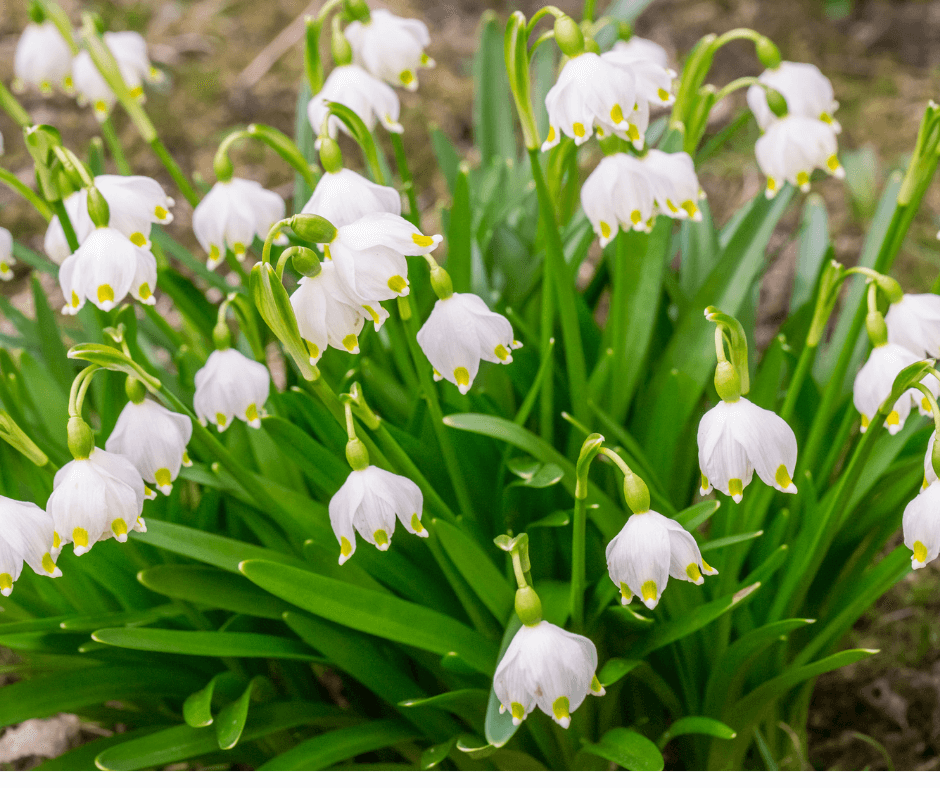
It’s a bit more complicated than that, though – especially on the snowdrop side of the equation. Spring snowflake (Leucojum vernum) is a single species, native to meadows and woodland edges of central and eastern Europe. Snowdrops, in contrast, comprise more than 20 species scattered over much of Europe and western Asia. Most snowdrops flower early in the year, but a few bloom in fall or early winter, bringing the flowering season to a close rather than ushering it in. Many Galanthus also interbreed readily, as evidenced by the hundreds of named garden hybrids. Snowdrops aren’t an “it” – they’re a multifarious “them”. Bees or all kinds pollinate the blooms.
For all their similarities, snowdrops and spring snowflake do differ in several respects, most obviously in the form of their flowers. Spring snowflake flowers are typically lantern-shaped, with each segment being of roughly equal length and having a pointed, out-curved, green-blotched tip. In snowdrops, the inner three inner petals are small, linear, and notched at the tip, together forming a tubular structure at the flower’s center. The three outer segments are spoon-shaped and approximately twice the length of the inners. They clasp tight in bud, giving unopened flowers a teardrop shape (hence the common name). Usually, each inner segment sports a green terminal blotch, around the segment’s notched tip (or “sinus”).
Snowdrop Species and Varieties
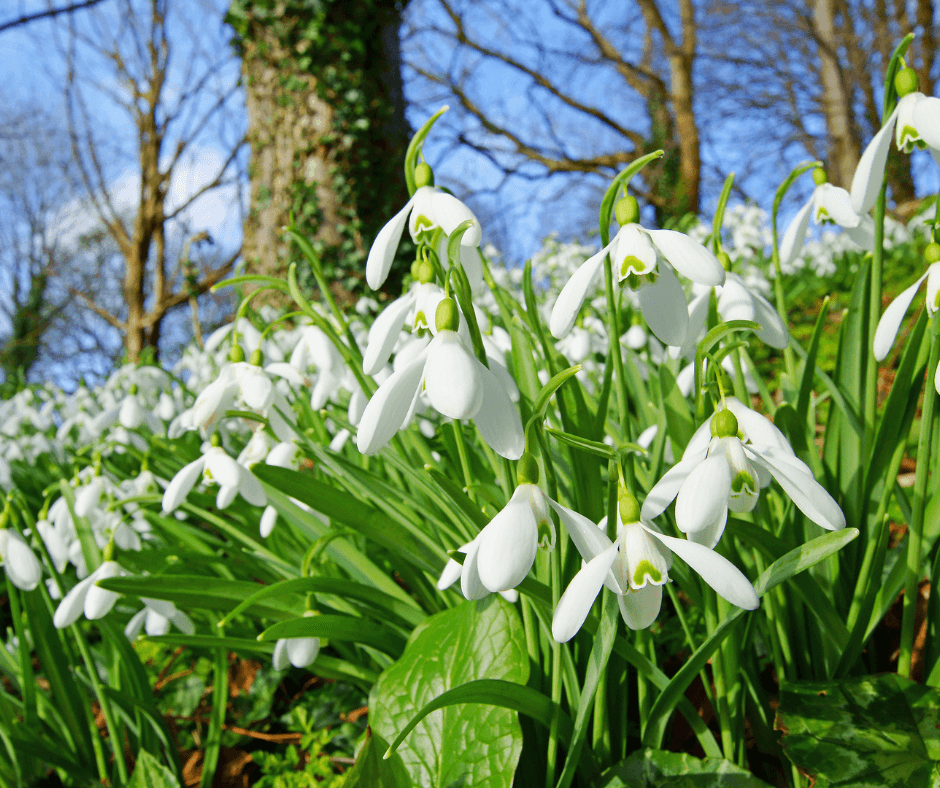
A few snowdrop varieties depart significantly from the norm, with such oddballs sometimes fetching exorbitant prices. Cultivars sporting doubled inner segments, green-marked outer segments, or same-sized inner and outer segments are available from bulb merchants and snowdrop specialists. Also on offer are a few highly prized variants with yellow – rather than green – markings, a rare mutation that occurs in summer snowflakes as well.
Snowdrops were formerly collected from the wild for the horticultural trade, a practice that posed a survival threat to several Galanthus species. The genus is now protected under international law, reducing pressure on wild populations. Still, be wary of sources that offer quantities of snowdrops at bargain-basement prices.
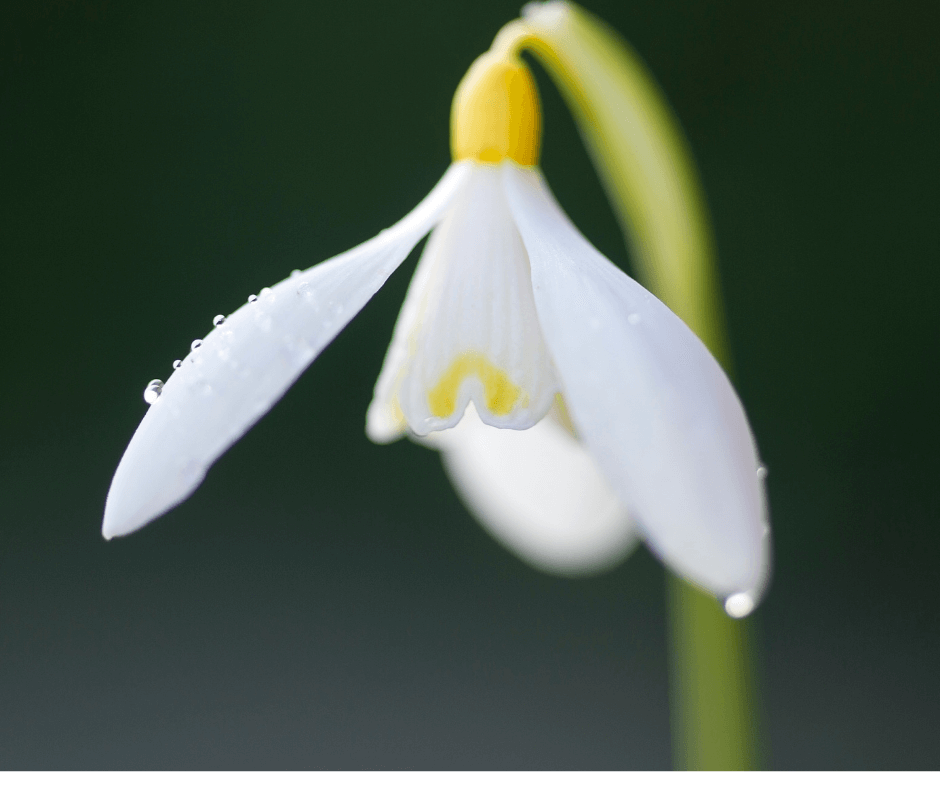
As befits its vernacular name, the common snowdrop (Galanthus nivalis) has been a popular garden plant since Renaissance times and is still by far the best-known member of the tribe. A rather diminutive thing, it produces half-inch-long “drops” on 4- to 6-inch stems framed by narrow, almost grassy leaves. Varieties include ‘Flore Pleno’, whose fully double inner segments form a white, green-fringed pompon at the flower’s center; ‘Viridapice’, with green-stained outer segments; and yellow-marked selections ‘Sandersii’ and ‘Blonde Inge’. Given its relatively small size, Galanthus nivalis is best planted in groups, to maximize its impact. It’s hardy to USDA Zone 4.
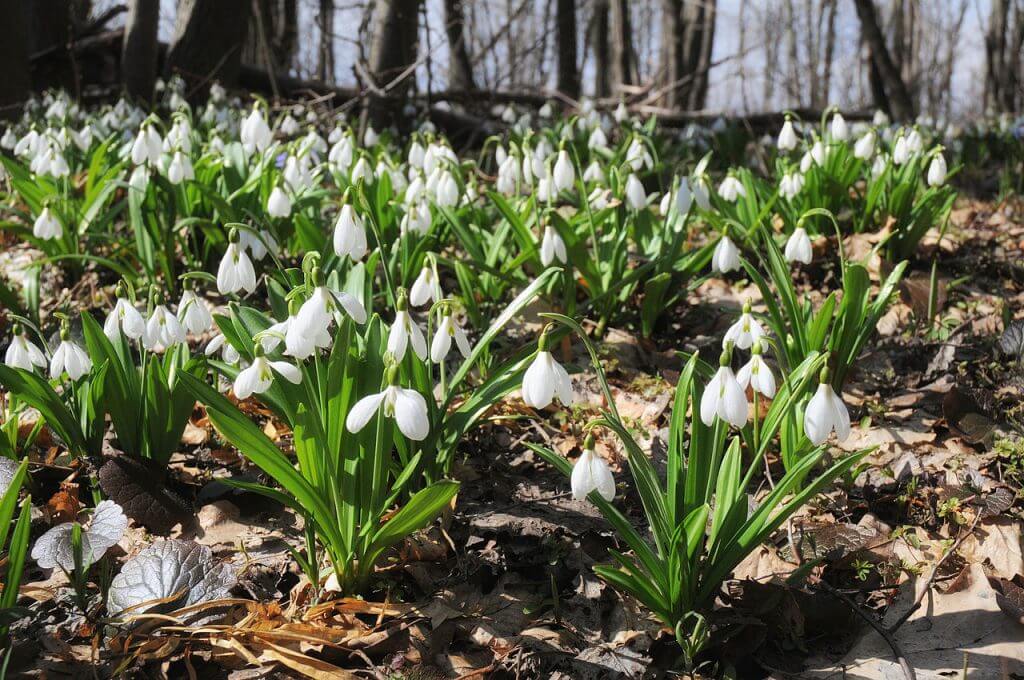
Crimean snowdrop (Galanthus plicatus) is a more substantial species, making a bold statement in the garden via its handsome, broad, dark green leaves and its inch-long, rounded flowers on 6- to 8-inch scapes. It’s thus well suited as a specimen plant – which is just as well, given its relative priciness. Pricier still are Crimean snowdrop cultivars such as ‘Diggory’, remarkable for its expanded, Japanese-lantern-shaped buds; and the self-explanatory ‘Colossus’. Galanthus plicatus also comes in yellow-blotched forms, most notably ‘Wendy’s Gold’. Most forms of the species are quite hardy, to Zone 5.

Galanthus woronowii is another snowdrop distinguished by broad, attractive leaves – glossy bright green in this case. The flowers – while not quite as large or rounded as those of Crimean snowdrop – are more than presentable, with dapper olive-green sinus marks and elegantly modeled outer segments. Native to mountainous regions of NE Turkey and SW Russia, it’s hardy into Zone 5.

Yet another species worth growing for its foliage as well as its flowers is giant snowdrop, Galanthus elwesii. It is indeed one of the goliaths of the genus, with 1- to 1.5-inch-long flowers borne on 6- to 10-inch stems, above erect clumps of lance-shaped, gray-green leaves. The inner flower segments of some forms of this highly diverse species have green markings at the base as well as at their tips. Flowering time also varies widely, with a few forms flowering in fall, and still others delaying bloom until mid-spring. Native from SW Europe through much of Turkey, Galanthus elwesii is somewhat less hardy than the other snowdrops described here, wintering into milder regions of Zone 5. Many cultivars are available from snowdrop specialists, including the exceptionally large-flowered ‘Comet’.
Antique Snowdrops
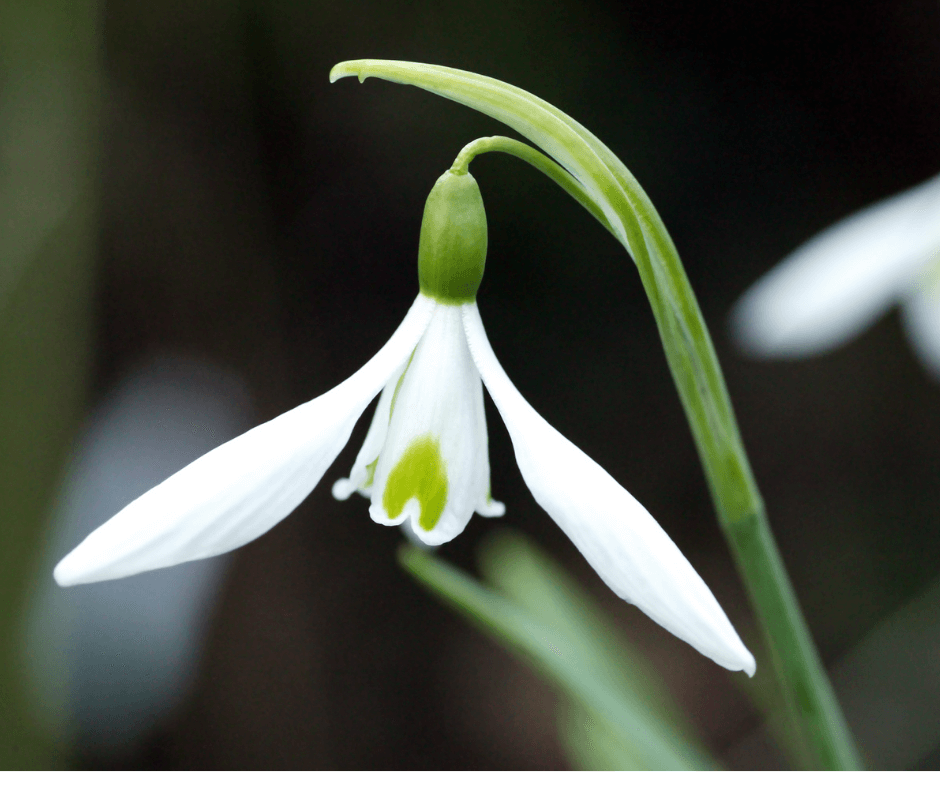
Of the numerous outstanding hybrids between the above (and other) Galanthus hybrids, among the best (and most affordable) are some of the old-time favorites. Originating nearly 150 years ago, the vigorous cultivar ‘Atkinsii’ is still treasured for its elegantly modeled flowers that have been likened in shape to pearl-drop earrings. The inners bear heart-shaped sinus marks.
Also dating back to the nineteenth century is ‘S. Arnott’, valued then and today for its large white flowers with chevron-shaped, olive-green sinus marks. Or even earlier in origin is the Irish cultivar ‘Straffan’, which typically produces two flowers per stem, rather than the usual singleton. It’s also notable for its relatively late season of bloom. Another vigorous old-timer, ‘Magnet’ dangles its classic drop-shaped flowers on long gracefully arching pedicels.
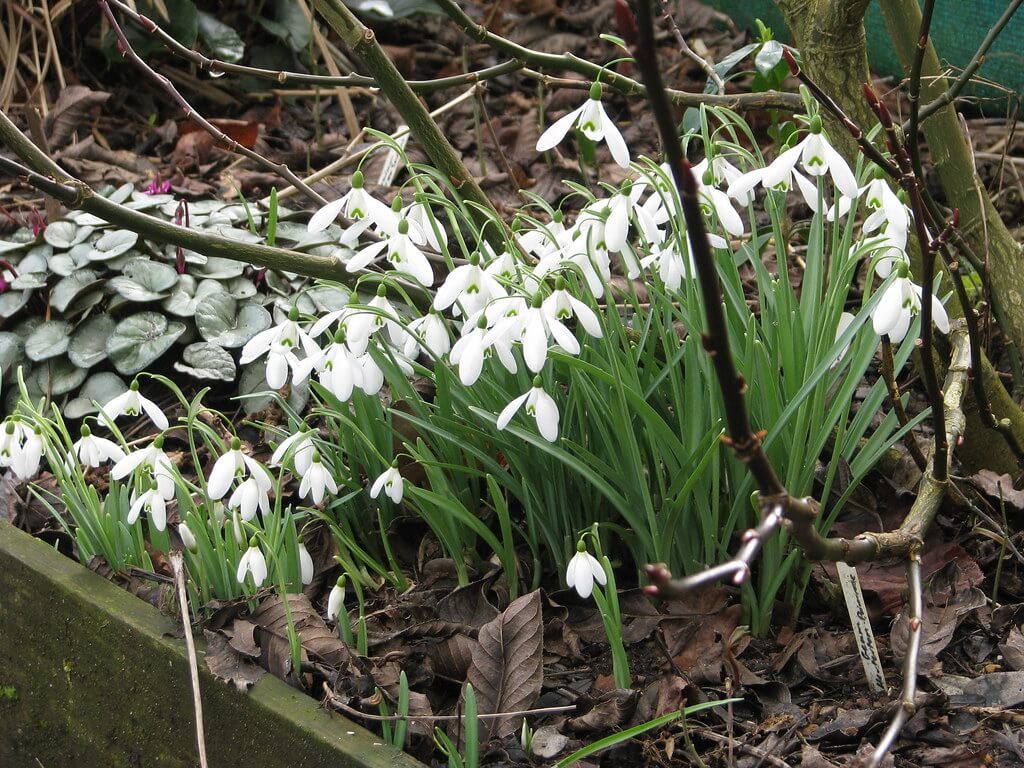
One of several outstanding double-flowered snowdrops developed in the mid-twentieth century by British galanthophile Heyrick Greatorex, ‘Ophelia’ displays a central rosebud of heavily green-stained inner segments, with two flowers often occurring per stem.
Although some specialists sell Galanthus “in the green” in spring, snowdrops are best planted as dormant bare-root bulbs in fall. To provide your snowdrops with the humus-rich, well-drained soil they prefer, be sure to dig in some Fafard Premium Natural & Organic Garden Compost before planting them. They’ll reward you by brightening your garden and your spirits next winter and spring.

